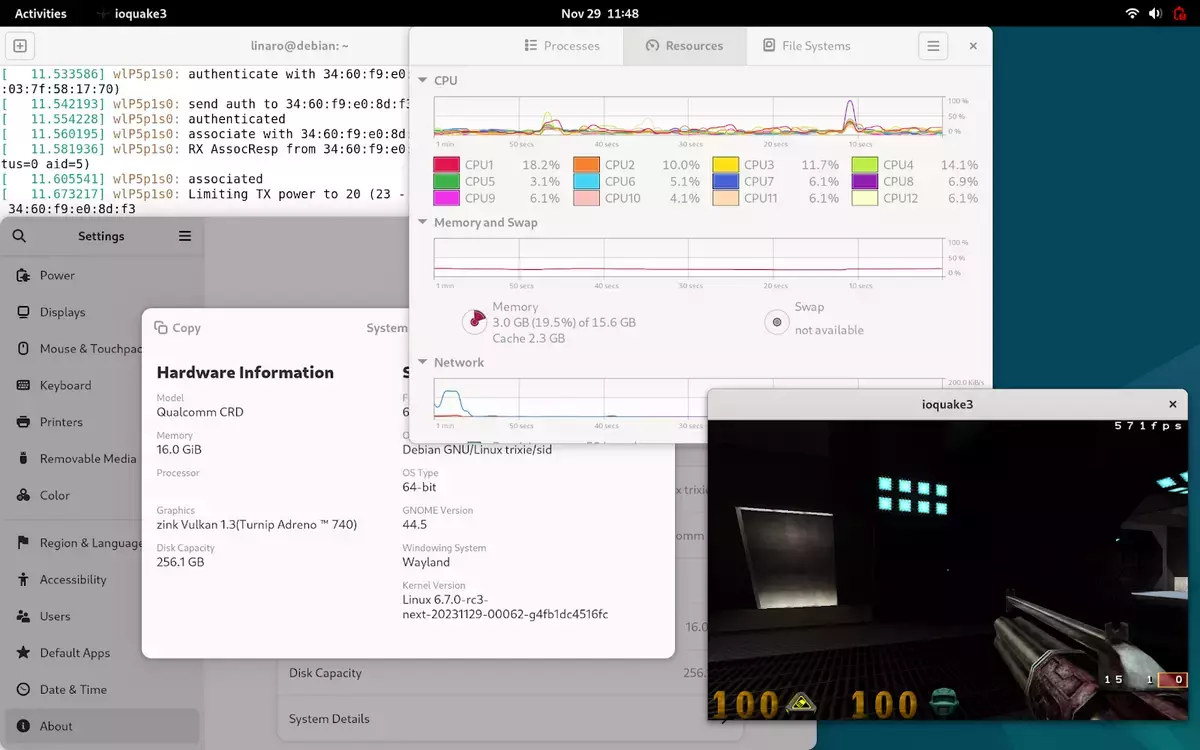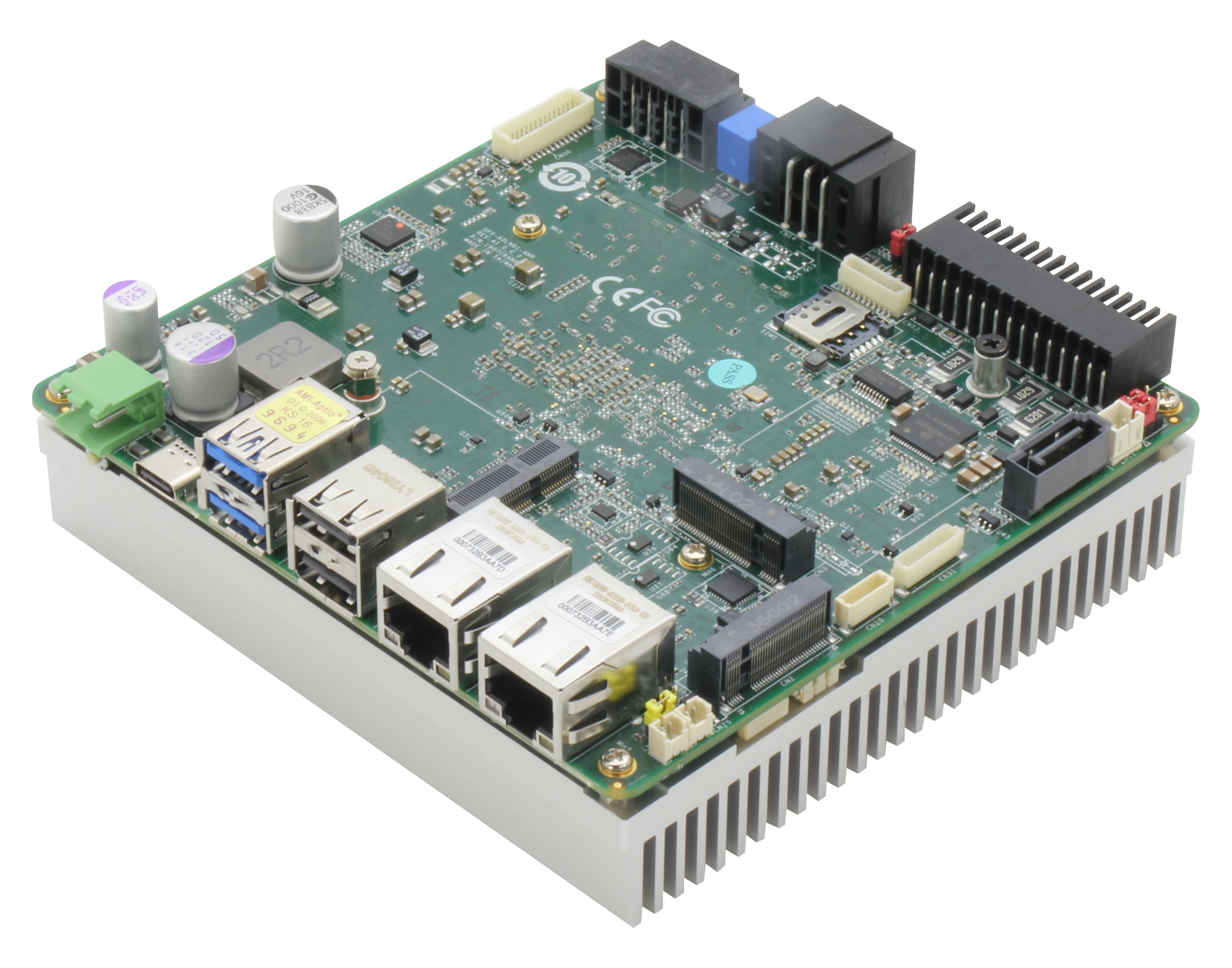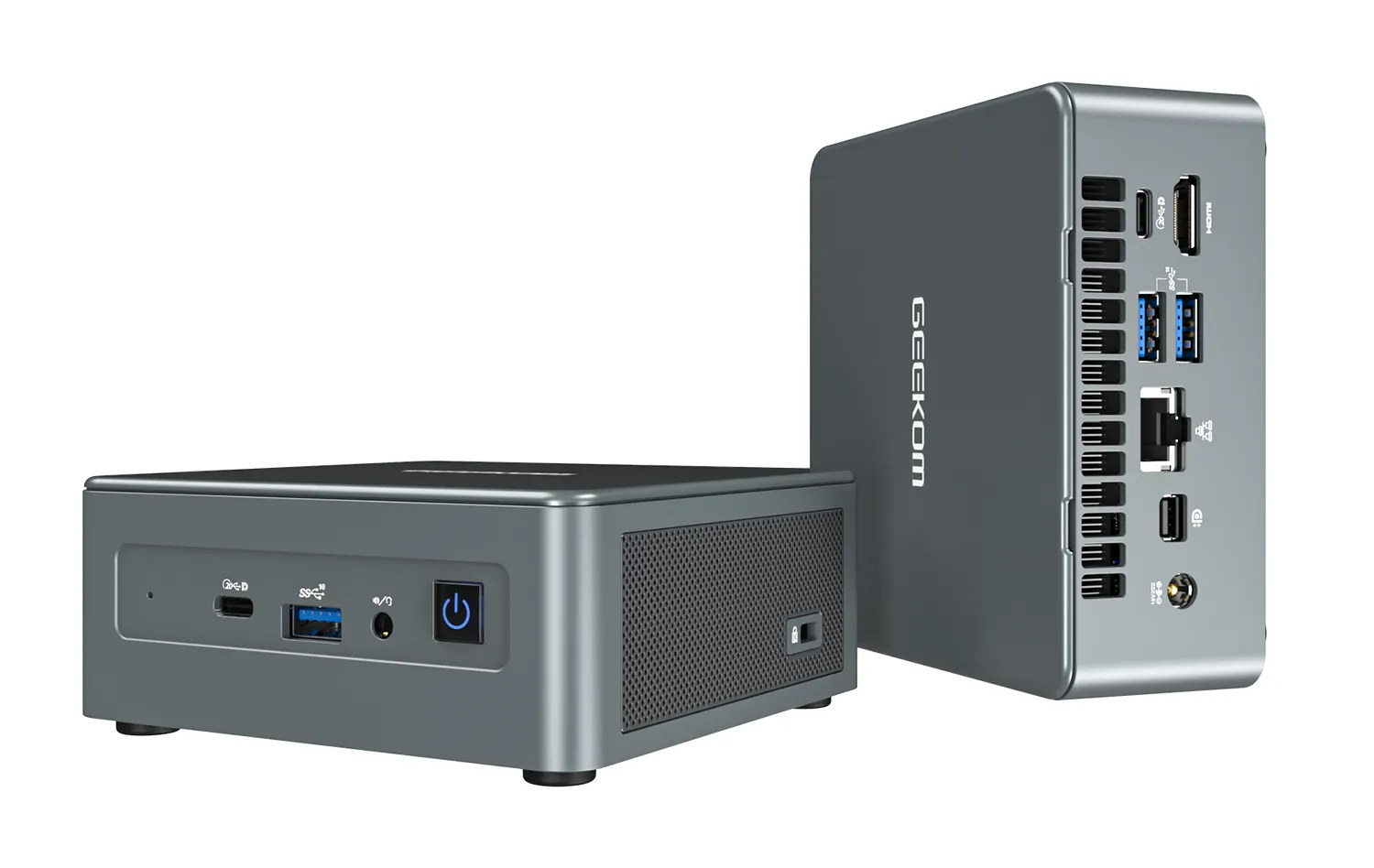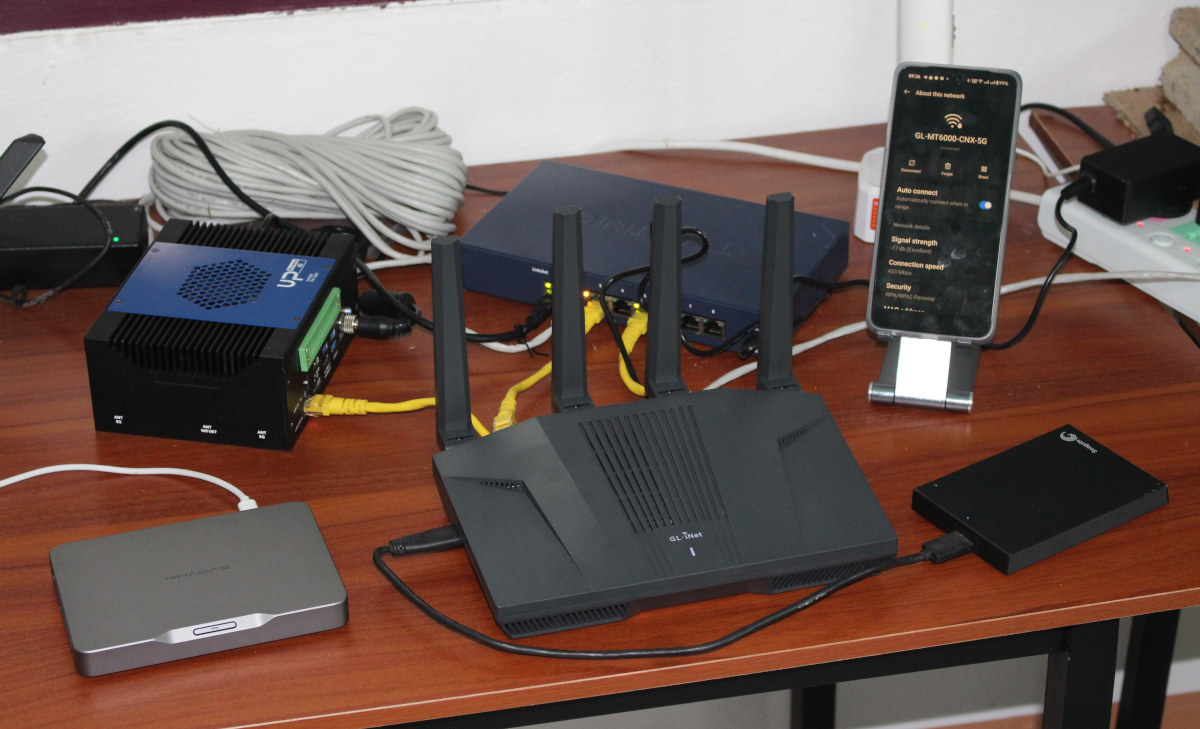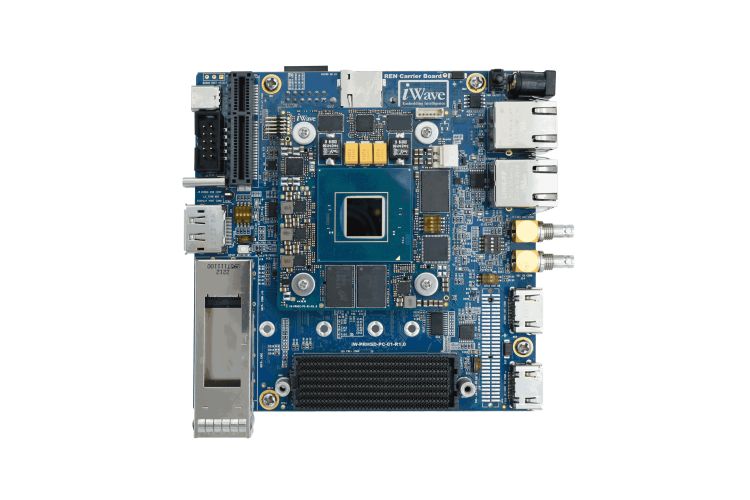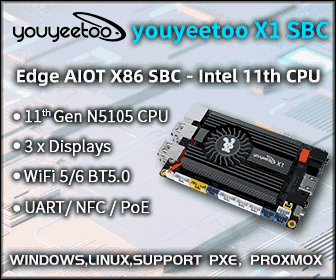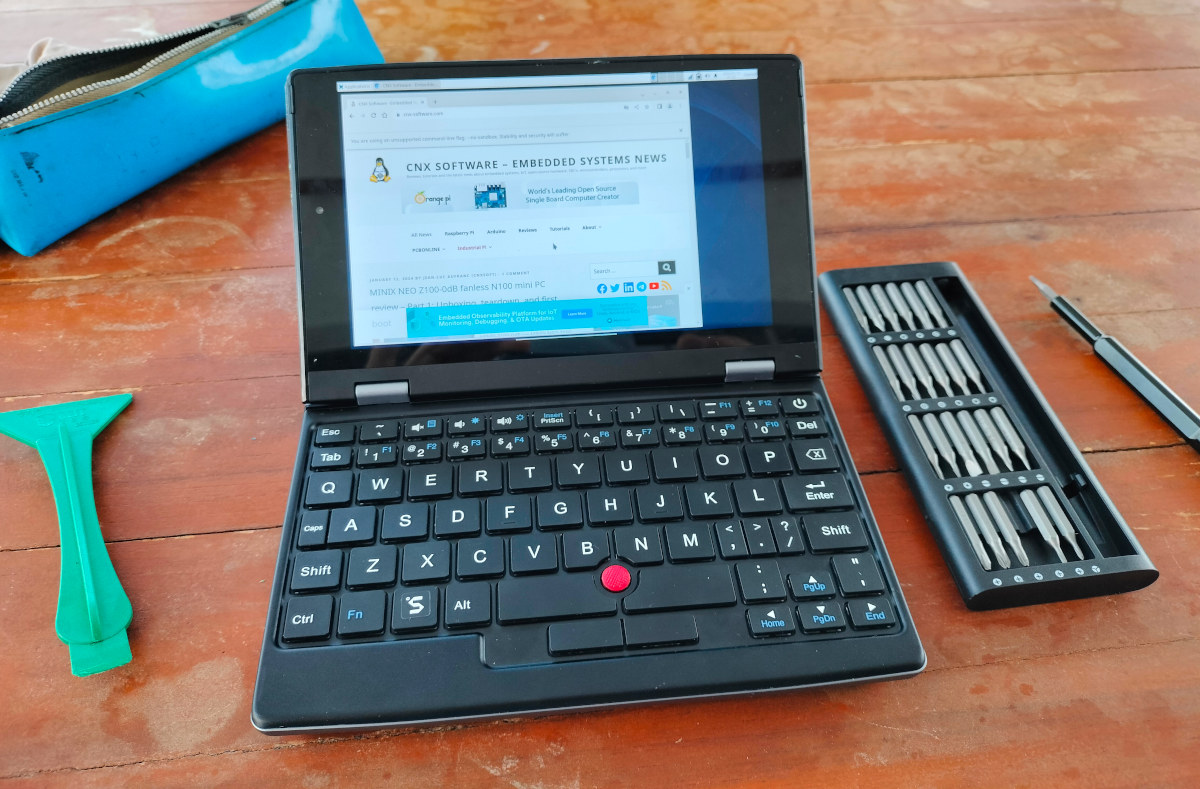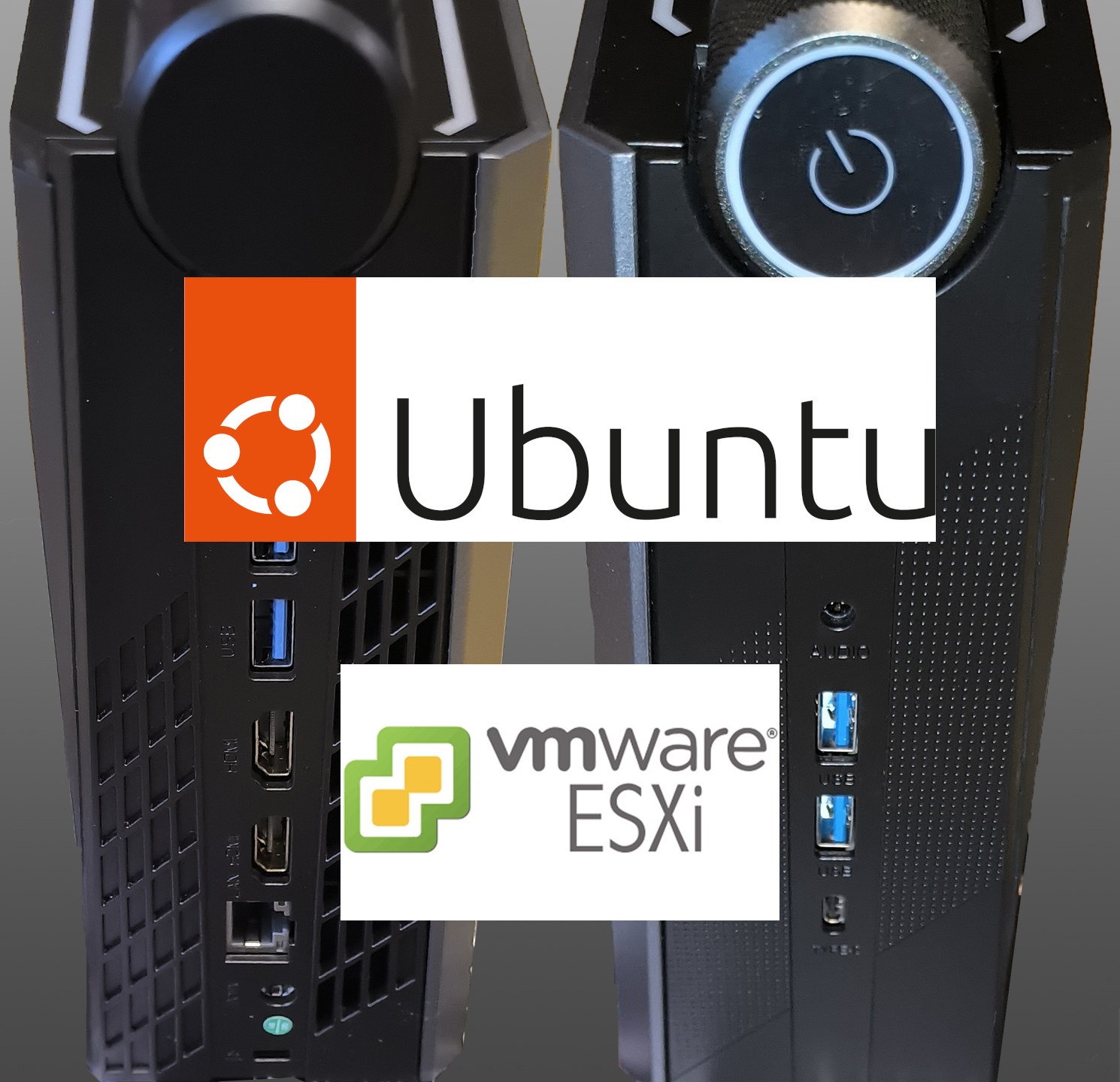When Qualcomm launched the powerful 4.2 GHz Snapdragon X Elite 12-core Arm SoC for “mobile PCs” (better known as laptops), I was surprised they showed benchmarks for both Windows and Linux as in the past, the company focused on Windows only for this type of processor. But at the time we were only shown Geekbench 6.2 results in Linux, so it was not clear what was supported at the time. But a recent post by Abel Vesa, Linaro engineer, explains a fully working Debian 12 image with GPU rendering and WiFi connectivity was ready right before launch and work is now being done to upstream the code to Linux mainline. In this post, he shares the Linux upstreaming plan and provides instructions to install Debian 12 on an official Snapdragon X Elite reference design. Upstreaming will be done in two parts, starting with support for the following: Qualcomm Oryon CPUs Clocks, […]
AAEON UP Xtreme 7100 robotics SBC and mini PC is offered with Core i3-N305 or Processor N97 CPU
AAEON UP Xtreme 7100 SBC and Mini PC powered by an Intel Core i3-N305 or Processor N97 Alder Lake-N CPU and designed as an “all-in-one robotics solution” providing the sensor data processing, graphics, and other resources required for path planning and control algorithms used in AGVs (automated guided vehicles) and AMRs (autonomous mobile robots). The UP Xtreme 7100 single board computer and UP Xtreme 7100 Edge mini PC are both offered in compact form factors suitable for robots and feature terminal blocks for serial communication (RS-232/422/485 port and CAN bus) and a 30-pin Phoenix connector with 24V digital I/O and GPIOs. Other features useful for industrial use include 9V to 36V DC input, vibration/shock resistance, and lockable I/O ports. UP Xtreme 7100 specifications: Alder Lake N-series SoC (one or the other) Intel Processor N97 quad-core processor up to 3.6 GHz with 6MB cache, 24EU Intel UHD Graphics Gen 12 @ […]
Betavolt BV100 3V nuclear battery aims to deliver 100 microwatts for over 50 years
Btavolt BV100 is a nuclear battery that never needs to be charged and designed to output 3V/100µW (microwatts) for over 50 years for the aerospace industry, AI equipment, medical devices, MEMS systems, advanced sensors, small drones, and micro-robots. At 15x15x5mm, the 50-year nuclear battery is fairly small although 100 microwatts is not a lot of power… That’s only the first step, however, as the Chinese company plans to launch a 1W nuclear battery, and says that if (government) policies allow, nuclear batteries should eventually enable smartphones that never need to be charged and forever fly drones… How does that all work? First, as Betavolt states in its press release (in Chinese), it’s not exactly new technical as in the 1960’s, the US and the USSR used betavoltaic batteries for the space programs. But those were relatively large and heavy, operated at high temperatures, and were expensive. Wikipedia mentions that one […]
GEEKOM Mini IT11 Deal – $479 / £429 for a mini PC with Core i7-11390H, 32GB RAM, 1TB SSD (Sponsored)
GEEKOM has launched a new deal for the Mini IT11 mini PC powered by an Intel Core i7-11390H quad-core/8-thread Tiger Lake processor with 32GB of RAM and a 1TB NVMe SSD for both US and UK customers with the price dropping to $479 or £429.00 with the coupon coupon cnxsoftware20off. The mini PC can also take a 2.5-inch SATA drive and a full-size SD card for extra storage, supports up to four displays through HDMI 2.0, Mini DisplayPort, and USB4 ports, offers gigabit Ethernet and WiFi 6 connectivity, and comes with a total of five USB 3.2/USB4 ports for expansion. GEEKOM Mini IT11 (32GB+1TB) specifications: SoC – Intel Core i7-11390H quad-core/8-thread Tiger Lake processor @ up 2.9 GHz / 5.0 GHz (Turbo) with 12MB cache, 96EU Intel Iris Xe graphics @ 1.40 GHz; TDP: 28W/35W System Memory – 32GB DDR4 SO-DIMM dual-channel memory, upgradeable up to 64GB Storage 1TB SSD […]
GL.iNet Flint 2 router review – Part 2: WiFi 6, 2.5GbE, WireGuard performance
In the first part of the review of the GL.iNet GL-MT6000 “Flint 2” WiFi 6 router, I had a look at the package content and the hardware design with a teardown of the router, and quickly tried it out. I’ve now had more time to play with the router focusing the review on WiFi 6 and 2.5GbE performance, and checking whether of 900 Mbps Wireguard VPN claim had any truth to it. The router also supports the Tor network to anonymously browse the web, Adguard Home to get rid of unwanted ads, and Repeater mode among other features. Those all work with the Fliont 2 router, but I won’t cover those in detail here, and invite you to check out the GL.iNet Brume 2 security gateway review for Tor and Adguard Home and the GL.iNet Beryl AX review for the repeater mode test. Connecting wired and wireless clients The Flint […]
iW-RainboW-G58M is a compact module based on the Intel Agilex 5 SoC FPGA series
iWave Systems, an embedded systems solutions company based in India, has announced the launch of the iW-RainboW-G58M system-on-module (SoM). The module is based on Intel’s Agilex 5 SoC FPGA E-series family, a lineup of affordable, midrange FPGAs for intelligent edge and embedded applications. The Agilex 5 E-series is optimized to deliver better performance-per-watt than its predecessors at a smaller form factor. They feature an asymmetric applications processor system comprising two Arm Cortex-A76 cores and two Cortex-A55 cores for optimized performance and power efficiency. The Arm cores in the Agilex 5 SoC FGPA family are more powerful than the Cortex-A53 cores in the Intel Agilex 7 and 9 products, but those have faster high-speed interfaces and more logic elements. The Agilex 5 SoM is suitable for development in fields like wireless communications, video/broadcast, and industrial test and measurement sectors. The last iWave module we covered, the iW-RainboW-G55M, was based on a […]
How I “fixed” the display on Lichee Console 4A terminal
When I wrote a hands-on post about Lichee Console 4A RISC-V development terminal I noted the display would sometimes have strange effects or simply go black. I’ve now fixed the issue, and I was just probably unlucky since the issue must be rare, but I’ll still document it in case somebody encounters a similar problem and for fun! First, the video below shows what I would see on my terminal after using it for a few minutes. Since then, the display has gone completely dark, and all I see is the backlight, but I can still access the device through an SSH terminal. It looks like a bad connection issue, but I still contacted Sipeed and they told me it must have been the display connector. So I turned off the device and reopened the enclosure to remove and reinsert the cable for the display as shown in the photo […]
Chatreey AM08 Pro review – Part 3: Ubuntu 22.04 and ESXi 7.0 on an AMD Ryzen 9 7940HS mini PC
In the first article, I checked out the hardware of the Chatreey AM08 Pro mini PC powered by an AMD Ryzen 9 7940HS CPU and tested it with Windows 11 Pro in the second part of the review. Now it’s time for the third part where I’ll test Ubuntu 22.04.03 Desktop OS and ESXi 7.0 update 3C hypervisor on the AM8 Pro mini PC. The installation process was simple enough and both WiFi and Ethernet were detected correctly. Contents Ubuntu 22.04 System information with AM08 Pro Performance of AM08 Pro 7940HS sbc-bench.sh Geekbench iozone3 FIO Network performance (2.5GbE and WiFi 6) of AM08 Pro 7940HS 2.5 GbE WiFi 6E Stress test and CPU temperature of AM08 Pro 7940HS Power consumption of AM08 Pro 7940HS Jellyfin on Ubuntu 22.04.03 (server) ESXi 7.0 Installation The stability Conclusion 1. Ubuntu 22.04 1.1. Ubuntu System information with AM08 Pro The system information in Ubuntu […]


